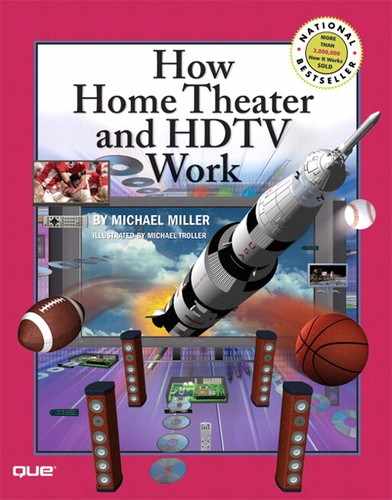
Videocassette recorders (VCRs) used to be a staple in just about every American household—and are still common in many living rooms. While VCRs were originally marketed as a way to record television broadcasts, their most common use was for watching prerecorded videocassette movies. (That’s how Blockbuster was born!)
In comparison to all the other components of your home theater system, however, the 1/2” VHS-format VCR is very old technology—more than 25 years old, to be precise. The format doesn’t offer digital sound or picture, the picture resolution is below even standard broadcast television, and it doesn’t offer much in the way of added features or high-tech bells and whistles—which is why the format is now in its declining years.
Let’s take a quick look at VHS picture and sound quality. On tapes recorded at the fastest speed (SP, which delivers the best possible quality),horizontal resolution is only 240 lines. Compare this to the 330-line resolution of normal broadcast or cable television, or the 500-line resolution of DVD, and you can see why a VCR’s picture looks dull and noisy next to that from other video sources. (And that’s just comparing it to standard definition analog sources; the difference between VHS and HDTV is even more significant.)
The home VCR is in the process of being replaced by DVD players (for watching prerecorded movies) and digital hard disk recorders (for recording television programs), both of which we’ll examine later in this book. There is one application, however, where videotape continues to rule, and that’s home movie making. Most camcorders sold today use some form of videotape-based recording, typically on ultra-small cassettes (much smaller than VHS tapes) and in a digital format.
A camcorder, of course, is that unique blend of video camera and video recorder that lets you make home movies on videocassettes. Most camcorders today record in the MiniDV format, which lays down digital audio and video signals on a cassette small enough to fit in the palm of your hand. This format delivers up to 500 lines of resolution (twice the resolution of traditional VHS), along with digital stereo sound. Because your movies are recorded digitally, you can transfer them (typically via IEEE 1394 FireWire connection) to your home computer and then edit them using digital movie editing software, such as Adobe Premiere or Final Cut Pro. When you record digitally, edit digitally, and then burn your movies to digital DVDs, you keep a fully digital signal path—which results in extremely high-quality picture and sound.
As good as today’s MiniDV camcorders are, they still are limited to standard definition recording. For the ultimate picture and sound quality, you can step up to a high-definition camcorder. These high-end (and high-priced) models record in the HDV format, which uses standard MiniDV cassettes but produces either 720p or 1080i resolution, depending on the camcorder. These HDV camcorders also record Dolby Digital surround sound and shoot in the 16:9 aspect ratio. The result? Truly impressive high-definition movies that look every bit as good as professional HDTV programming.


